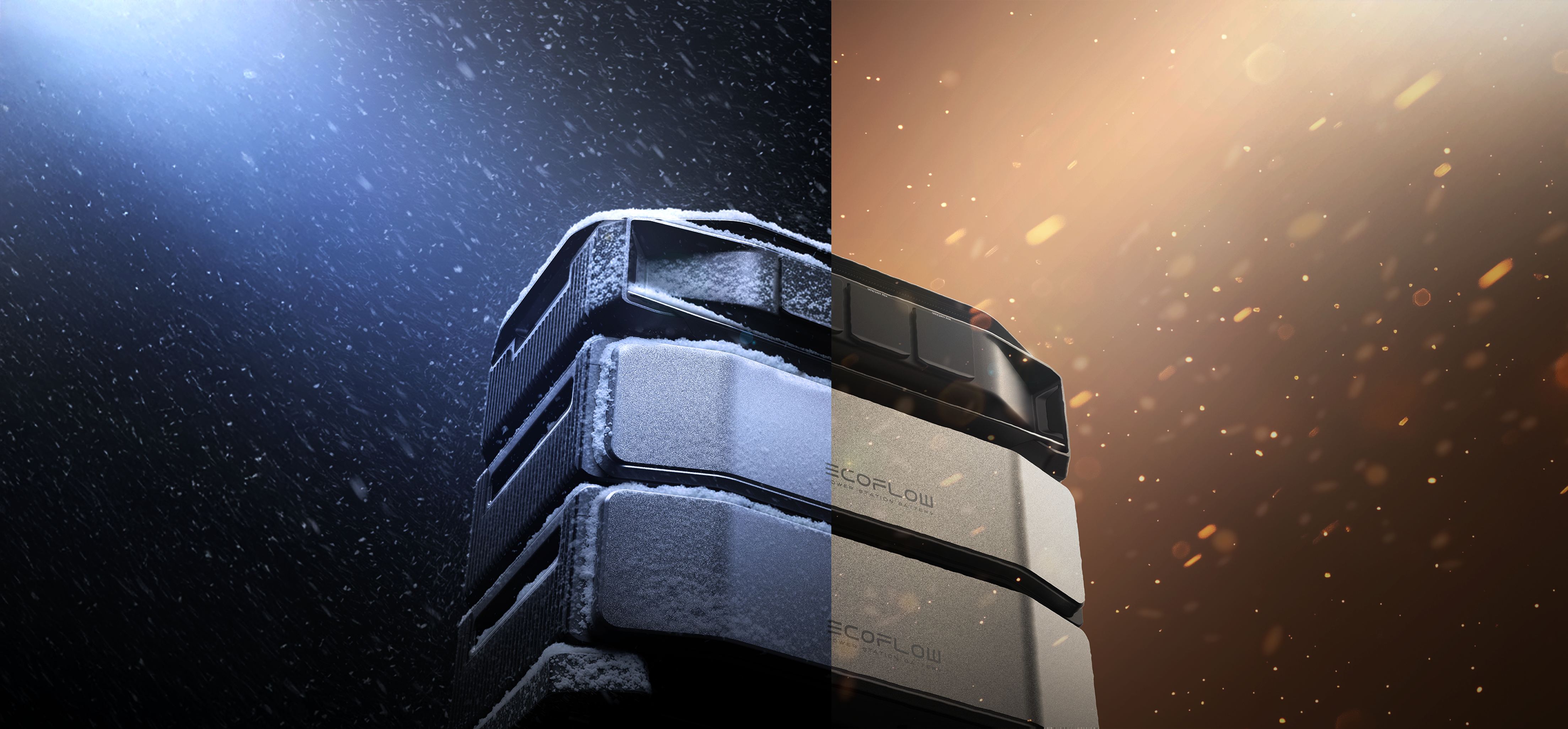How to Build a 72-Hour Backup Power Plan for Hurricane Outages
After a hurricane, the power is often out for days. A widespread outage disrupts communication, spoils food, and can disable vital medical equipment. Disaster relief agencies recommend having a 72-hour emergency power plan because it can take that long for crews to make repairs. This article tells you how to make your own strategy, from figuring out what you need to choosing the correct gear and using it securely.
How Much Power Do You Really Need?
To build a good plan, you first need to know what you need to power. An energy audit calculates your exact power needs, ensuring you get a system that's the right size—not too small to work and not too big or costly.
List Your Crucial Devices
Walk through your home and identify the devices you would need for the first 72 hours. Put safety first.
Communication: Cell phones, laptops, and battery-powered radios.
Medical: Any required medical equipment, such as CPAP machines or medication refrigerators.
Refrigeration: Your refrigerator and freezer to keep food from spoiling.
Lighting: A few efficient LED lamps for key areas.
Information: A small TV or radio to follow emergency broadcasts.
Calculate Your Energy Requirement
Find the power use in watts (W) on each device. Then, estimate how many hours you’ll use it over a three-day period. Use this formula for each item:
Watts (W) × Hours of Use (h) = Watt-hours (Wh)
Add the Watt-hours for all devices to get your 72-hour total. For example, a refrigerator that uses 150W and runs for 24 total hours over three days needs 3,600 Wh.
Add a Safety Margin
Add a safety buffer of 20-25% to your total. This covers power surges from starting appliances, lower efficiency in older devices, and other unexpected needs. This extra capacity helps your plan stay reliable.
Compare Your Options for Backup Power for Hurricane Outages
After your energy audit, you can look at different backup power systems for the power outage. Each type has pros and cons, and the right one depends on your needs, home, and budget.


Portable Power Stations
These are large, rechargeable batteries in a case with outlets. They store electricity and deliver it silently.
Pros: Silent, no fumes, safe for indoor use. Very user-friendly.
Cons: Limited capacity, must be recharged. Lower power output than generators.
Best For: Small electronics, medical devices, and a few lights.
Fuel Powered Generators
These run on gasoline or propane to create a lot of electricity.
Pros: High power output for large appliances. Can run as long as you have fuel.
Cons: Loud, produce deadly carbon monoxide (CO) fumes, and must only be used outdoors. They require upkeep and safe fuel storage.
Best For: Homeowners who need to power large items like refrigerators and window AC units.
Solar and Battery Hybrid Systems
These systems connect solar panels with a battery bank. The panels gather energy during the day to power your home and charge the batteries for nighttime use. ECOFLOW Delta Pro Ultra X delivers silent, indoor‑safe backup with 120V/240V split‑phase output and fast PV/AC charging, enabling true multi‑day resilience after hurricanes while scaling capacity to match whole‑home or critical‑load goals.
Pros: Clean, renewable, and quiet. Sunlight is a free fuel source.
Cons: High initial cost. Performance depends on sunny weather. Requires professional installation.
Best For: People in sunny areas looking for a long-term power solution.
Feature | Portable Power Station | Fuel Generator | Solar + Battery System |
Best Use | Indoors, small electronics | Outdoors, large appliances | Whole-home, long-term |
Noise Level | Silent | Loud | Silent |
Fumes | None | High (CO risk) | None |
Upfront Cost | Low to Medium | Medium | Very High |
Runtime | Limited by capacity | Limited by fuel | Potentially unlimited |
What Is an Effective Strategy for Managing Backup Power?
Possessing the correct equipment is only the first step; a disciplined power management strategy is required to ensure your limited electricity supply lasts for the entire 72-hour emergency period. A methodical approach to power consumption will maximize the utility of your resources and prevent premature depletion.
Adopt a Three-Phase Management Approach
It is practical to divide your power usage into three distinct phases, each with a different objective.
Phase 1: Pre-Outage Preparation. In the 24 to 48 hours before the storm is expected to make landfall, your goal is to maximize stored energy and minimize future needs. Fully charge all primary and secondary power sources, including portable power stations, USB power banks, laptops, and phones. Set your refrigerator and freezer to their coldest settings to build up a "thermal reserve," which will help them stay colder for longer once the power is out.
Phase 2: Active Outage Conservation. As soon as the outage begins, you must shift to a strict conservation mindset. Unplug all non-essential electronics from outlets to eliminate "phantom loads," as many devices continue to draw a small amount of power even when turned off. Implement strict light discipline, using single LED headlamps or lanterns for task lighting rather than illuminating entire rooms.
Phase 3: Post-Storm Recovery. After the storm has passed, your power priorities may shift slightly. While conservation remains important, you may allocate more power to communication devices for contacting family or insurance agents. You might also use power for recovery tools or fans to aid in drying minor water intrusions.
Implement a Tiered Power Budget
To prevent the arbitrary use of a finite resource, you must categorize your electrical loads into a clear hierarchy. This allows you to make logical decisions about what to power on and for how long. The following table provides a framework for budgeting your power.
| Priority Tier | Example Devices | Usage Protocol |
| Tier 1: Critical | Medical devices (CPAP, etc.), one communication line (cell phone), one safety light | These devices receive first priority. They should be operated as needed to ensure health and safety. |
| Tier 2: Important | Refrigerator, freezer, modem/router for news updates | Operate these devices intermittently. Run a refrigerator for one hour every four to five hours to maintain a safe temperature without continuous power draw. |
| Tier 3: Discretionary | Fans, coffee maker, television, microwave, additional lighting | Use these appliances only when you have a confirmed power surplus and all Tier 1 and 2 needs have been met. Their use should be brief. |
Develop a Power Usage Schedule
A schedule is particularly effective when using a fuel generator to recharge battery stations or run heavy loads. This practice conserves fuel and reduces generator noise.
A sample schedule could be:
Morning (e.g., 8:00 AM - 9:00 AM): Operate the generator. During this time, allow the refrigerator to run, brew coffee, and connect your portable power station to fully recharge.
Daytime: Operate on silent battery power for low-wattage needs like charging a phone. Keep the refrigerator closed.
Evening (e.g., 6:00 PM - 7:30 PM): Operate the generator again. Run the refrigerator, heat a meal using a microwave or electric burner, and top off the charge on your power station and devices for overnight use.
Overnight: Rely exclusively on the silent power station for any critical needs, such as a medical device.
This structured approach to power management transforms a simple backup power source into a reliable, long-lasting utility that can sustain a household through the critical first 72 hours of an outage.


How to Stay Safe and Keep Your Gear Ready
Using backup power isn't complicated, but safety is non-negotiable. Your gear is useless if it's a hazard. Follow these critical safety rules and maintenance tips to ensure your power source is a help, not a harm.
Top 4 Safety Rules to Remember
Avoid Carbon Monoxide (CO) Poisoning: This is the biggest risk. NEVER run a fuel generator indoors, in a garage, or on a covered porch. It must be at least 20 feet away from all doors, windows, and vents. Always have a battery-powered CO detector inside your home.
Prevent Electrical Shocks: Water and electricity are a deadly mix. Keep your generator and connections dry, using a generator tent or an open-sided canopy if it's raining. Use only heavy-duty, outdoor-rated extension cords.
Eliminate Fire Risk: Gasoline is highly flammable. Always let the generator cool down for at least 15 minutes before refueling to prevent fires. Store your fuel in approved containers far away from any heat source.
Stop Equipment Overload: Don't plug everything in at once. To avoid overloading your system, start the appliance with the biggest motor first (like your refrigerator). Once it's running smoothly, you can add smaller devices one at a time.
Simple Maintenance to Keep It Ready
An untested generator is just a large paperweight. Make sure it will start when you need it most.
Monthly Check: Start your generator and let it run for 15-20 minutes. This keeps the engine parts lubricated.
Before a Storm: Do a quick check of your oil and stabilized fuel levels.
Yearly Service: Change the oil and perform a full test run where you power a few actual appliances.
Start Building Your Plan Today
Don't wait until a storm gets close. Having a plan and supplies ready ahead of time is the best way to deal with a hurricane power outage. You can keep your family safe and make a risky situation easier to handle if you know what you need, choose the correct gear, and utilize it safely. The ECOFLOW Delta Pro Ultra X is built to handle the problems that come up during a hurricane, giving your family the quiet, fume-free, and strong energy they need inside. Forget about the noise and fuel storage that come with a generator. Ensure multi-day resilience and true peace of mind.
FAQs Of Portable Power Stations
Q1: What does "pure sine wave" mean in a power station?
A pure sine wave inverter makes electricity that is clean and reliable, just like what you get from the utility company. This is the safest and greatest kind of electricity for delicate gadgets like laptops, modern TVs, and medical equipment. These devices can be harmed if you use a power source without them.
Q2: Can solar panels still work in a hurricane?
Because of the dense clouds and rain, solar panels can't produce power during a hurricane. Their major value comes after the storm. On a clear day, they may recharge your power stations, which means you can use a renewable energy source when the grid is down.
Q3: What is the difference between Wh and kWh?
The Wh (Watt-hour) and the kWh (kilowatt-hour) are both units of energy. A kWh is equal to 1,000 Wh. Utility bills utilize kWh to figure out how much energy people use in their homes. Because it's more convenient for smaller power needs, the capacity of portable power stations is generally given in Wh.
Q4: Can I use the power station while it is charging (Pass-Through Charging)?
Yes, most modern portable power stations support pass-through charging (or "charge-through"). This allows you to simultaneously charge the power station (e.g., from a solar panel or wall outlet) and use it to power your devices. This feature is often built in with advanced Battery Management Systems (BMS) to ensure safety and protect the battery.